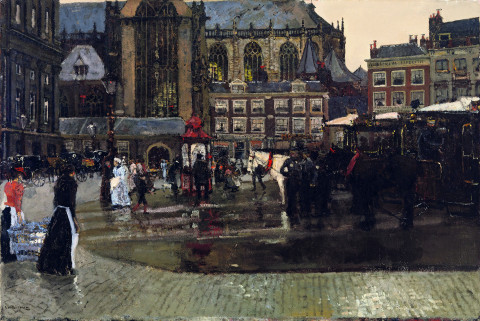
Tumult in the City
Just as the Hague School artists left their studios in town to paint the surrounding countryside, so the artists of...
Kunstmuseum Den Haag has a treasure chamber of over 160.000 pieces of art. Here we work on making the highlights from this collection available online.
In 1935 the Kunstmuseum received a unique donation comprising 93 sketchbooks that had belonged to Isaac Israels (1865-1934). Son of Jozef Israels, leading light of the Hague School, in the late nineteenth century Isaac was the promising new painter of his generation. But Isaac’s sketchbooks show above all his extraordinary talent for drawing. More than eighty years after they were donated, the Kunstmuseum has now digitised every page.
Leafing through a sketchbook feels like reading a journal, and this is certainly true of Israels’ drawings. Around 1886 he moved to Amsterdam, where he made thousands of sketches of city life. The sketchbooks, ranging from pocket-sized to large leaf, have soiled, creased covers. They were mainly tools for the artist, serving both as an exercise and as a reminder. Israels attempted to capture the essence of his subject in his drawings made in pencil, pastels, charcoal and sometimes also watercolour. The sketchbooks were therefore an essential part of Israels’ creative process.
In 1891 Israels was given official permission to paint in the streets of Amsterdam, with the proviso that he would be removed by the police if he caused any hindrance. Most artists preferred to rent a vacant room in order to paint scenes of the street from the window. No permission was needed to draw in the street, however, and a drawing could be made quickly and unobtrusively, provided one had the talent. The sketchbooks allow us to look over Israels’ shoulder as he visits Circus Carré, the Concertgebouw concert hall and working-class bars and pubs. The books contain beautifully finished drawings, quick doodles, childlike drawings and the occasional brief note. Israels was able to capture a dancing woman in just a few swirling lines, and his drawings convey the dynamism of city life even more than his paintings.
Some of the sketchbooks are on display in ‘Tumult in the City. Dutch Artists of the 1880s’ until 5 November 2017.